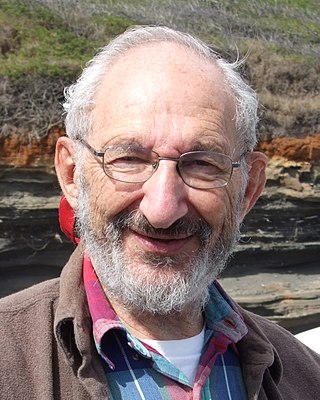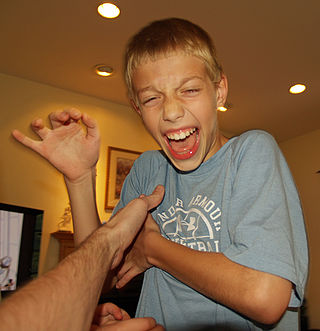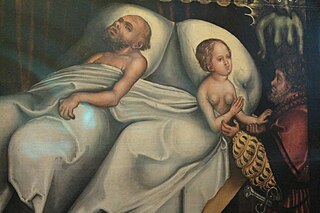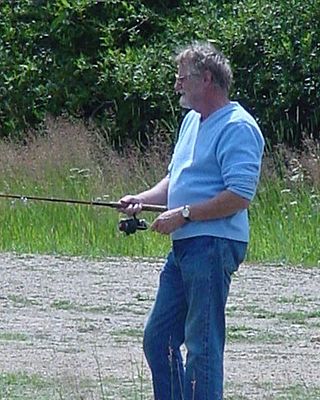Related Research Articles

Human sexual activity, human sexual practice or human sexual behaviour is the manner in which humans experience and express their sexuality. People engage in a variety of sexual acts, ranging from activities done alone to acts with another person in varying patterns of frequency, for a wide variety of reasons. Sexual activity usually results in sexual arousal and physiological changes in the aroused person, some of which are pronounced while others are more subtle. Sexual activity may also include conduct and activities which are intended to arouse the sexual interest of another or enhance the sex life of another, such as strategies to find or attract partners, or personal interactions between individuals. Sexual activity may follow sexual arousal.

Sexology is the scientific study of human sexuality, including human sexual interests, behaviors, and functions. The term sexology does not generally refer to the non-scientific study of sexuality, such as social criticism.

The Kinsey scale, also called the Heterosexual–Homosexual Rating Scale, is used in research to describe a person's sexual orientation based on one's experience or response at a given time. The scale typically ranges from 0, meaning exclusively heterosexual, to a 6, meaning exclusively homosexual. In both the male and female volumes of the Kinsey Reports, an additional grade, listed as "X", indicated "no socio-sexual contacts or reactions" (asexuality). The reports were first published in Sexual Behavior in the Human Male (1948) by Alfred Kinsey, Wardell Pomeroy, and others, and were also prominent in the complementary work Sexual Behavior in the Human Female (1953).

Seduction has multiple meanings. Platonically, it can mean "to persuade to disobedience or disloyalty", or "to lead astray, usually by persuasion or false promises".
The Masters and Johnson research team, composed of William H. Masters and Virginia E. Johnson, pioneered research into the nature of human sexual response and the diagnosis and treatment of sexual disorders and dysfunctions from 1957 until the 1990s.

John William Money was a New Zealand American psychologist, sexologist and professor at Johns Hopkins University known for his research on human sexual behavior and gender.

Milton Diamond is an American Professor Emeritus of anatomy and reproductive biology at the University of Hawaiʻi at Mānoa. After a career in the study of human sexuality, Diamond retired from the university in December 2009 but continued with his research and writing until retiring fully in 2018.
Sociosexuality, sometimes called sociosexual orientation, is the individual difference in the willingness to engage in sexual activity outside of a committed relationship. Individuals who are more restricted sociosexually are less willing to engage in casual sex; they prefer greater love, commitment and emotional closeness before having sex with romantic partners. Individuals who are more unrestricted sociosexually are more willing to have casual sex and are more comfortable engaging in sex without love, commitment or closeness.

Haptic communication is a branch of nonverbal communication that refers to the ways in which people and animals communicate and interact via the sense of touch. Touch is the most sophisticated and intimate of the five senses. Touch or haptics, from the ancient Greek word haptikos is extremely important for communication; it is vital for survival.
The social construction of human sexuality and sexual behavior—along with its taboos, regulation, and social and political impact—has had a profound effect on the various cultures of the world since prehistoric times.

Androphilia and gynephilia are terms used in behavioral science to describe sexual orientation, as an alternative to a gender binary homosexual and heterosexual conceptualization. Androphilia describes sexual attraction to men or masculinity; gynephilia describes the sexual attraction to women or femininity. Ambiphilia describes the combination of both androphilia and gynephilia in a given individual, or bisexuality.
The German Society for Social-Scientific Sexuality Research is a sexuality research and counselling organization based in Düsseldorf, Germany. It is primarily devoted to sociological, behavioral, and cultural sexuality research.
Human sexuality is the way people experience and express themselves sexually. This involves biological, psychological, physical, erotic, emotional, social, or spiritual feelings and behaviors. Because it is a broad term, which has varied with historical contexts over time, it lacks a precise definition. The biological and physical aspects of sexuality largely concern the human reproductive functions, including the human sexual response cycle.
Courtship disorder is a theoretical construct in sexology developed by Kurt Freund in which a certain set of paraphilias are seen as specific instances of anomalous courtship instincts in humans. The specific paraphilias are biastophilia, exhibitionism, frotteurism, telephone scatologia, and voyeurism. According to the courtship disorder hypothesis, there is a species-typical courtship process in humans consisting of four phases, and anomalies in different phases result in one of these paraphilic sexual interests. According to the theory, instead of being independent paraphilias, these sexual interests are individual symptoms of a single underlying disorder.
Sexuality in the Philippines encompasses sexual behavior, sexual practices, and sexual activities exhibited by men and women of the Philippines past and the present. It covers courtship strategies for attracting partners for physical and emotional intimacy, sexual contact, sexual reproduction, building a family, and other forms of individual interactions or interpersonal relationships, as set and dictated by their culture and tradition, religion, beliefs, values and moral convictions, psychology, foreign influences, and other related factors.

Sexual suggestiveness is visual, verbal, written or behavioral material or action with sexual undertones implying sexual intent in order to provoke sexual arousal.

In evolutionary psychology and behavioral ecology, human mating strategies are a set of behaviors used by individuals to select, attract, and retain mates. Mating strategies overlap with reproductive strategies, which encompass a broader set of behaviors involving the timing of reproduction and the trade-off between quantity and quality of offspring.

Extended female sexuality is where the female of a species mates despite being infertile. In most species, the female only engages in copulation when she is fertile. However, extended sexuality has been documented in old world primates, pair bonded birds and some insects. Extended sexuality is most prominent in human females who exhibit no change in copulation rate across the ovarian cycle.

David Pafford Crews is the Ashbel Smith Professor of Zoology and Psychology at the University of Texas at Austin. He has been a pioneer in several areas of reproductive biology, including evolution of sexual behavior and differentiation, neural and phenotypic plasticity, and the role of endocrine disruptors on brain and behavior.
References
- ↑ John Money, The Development of Sexuality and Eroticism in Humankind, The Quarterly Review of Biology, Vol. 56, No. 4 (Dec., 1981), pp. 379-404
- ↑ Beach, F.A. 1976 Sexual attractivity, proceptivity, and receptivity in female mammals. Hormones and Behavior, 7:105-138.
- ↑ John Money, Human Sexuality: Concupiscent and Romantic, Journal of Psychology & Human Sexuality, Volume: 15 Issue: 1; ISSN 0890-7064 Pub Date: 16 December 2003
- ↑ Perper, Timothy 1985. Sex Signals: The Biology of Love. Philadelphia: ISI Press. Chapters 4 and 5
- ↑ Perper, Timothy 1994 "Courtship." In Vern L. Bullough and Bonnie Bullough, editors. Human Sexuality: An Encyclopedia. New York: Garland. pages 152-155.
- ↑ Moore, Monica M. 1985 Nonverbal courtship patterns in women: Context and consequences. Ethology and Sociobiology, 6:201-212.
- ↑ Moore, Monica M. and Diane L. Butler 1989 Predictive aspects of nonverbal courtship behavior in women. Semiotica, 76:205-215.